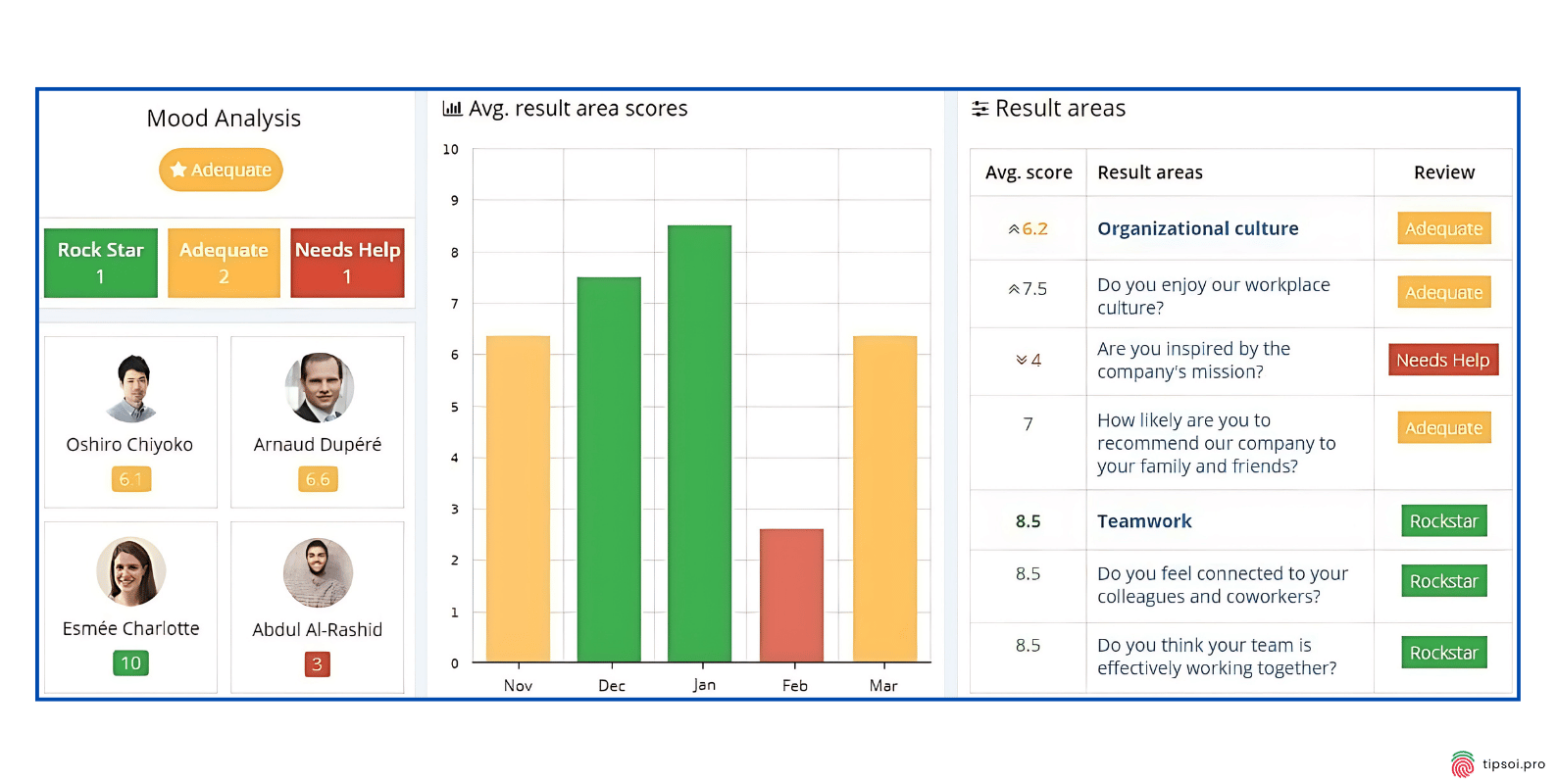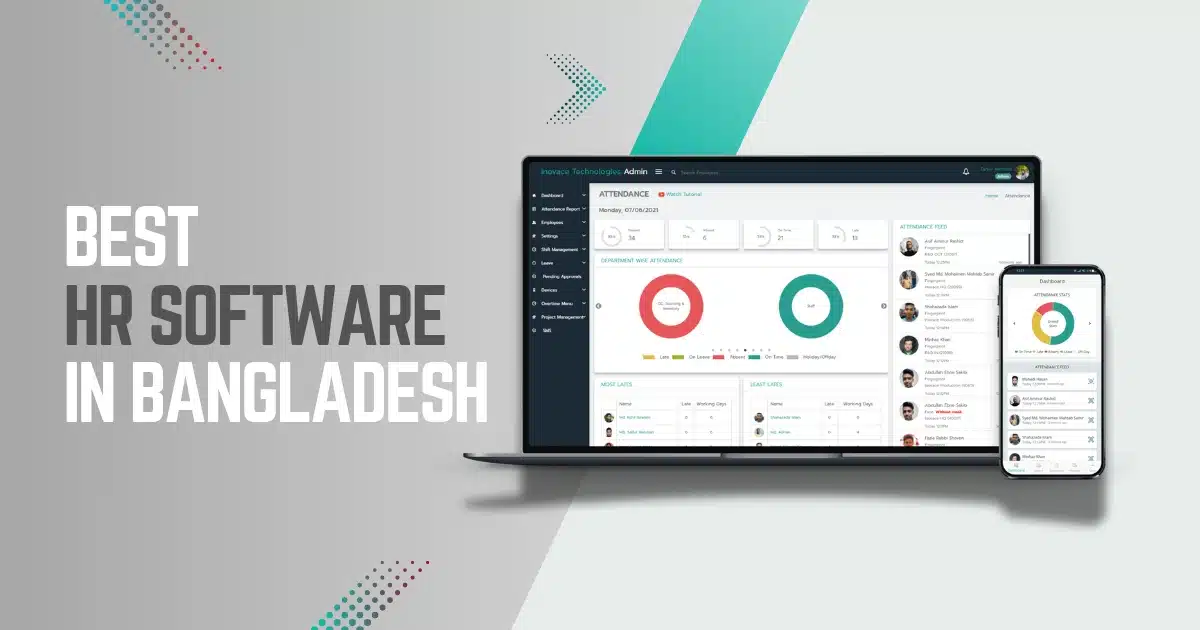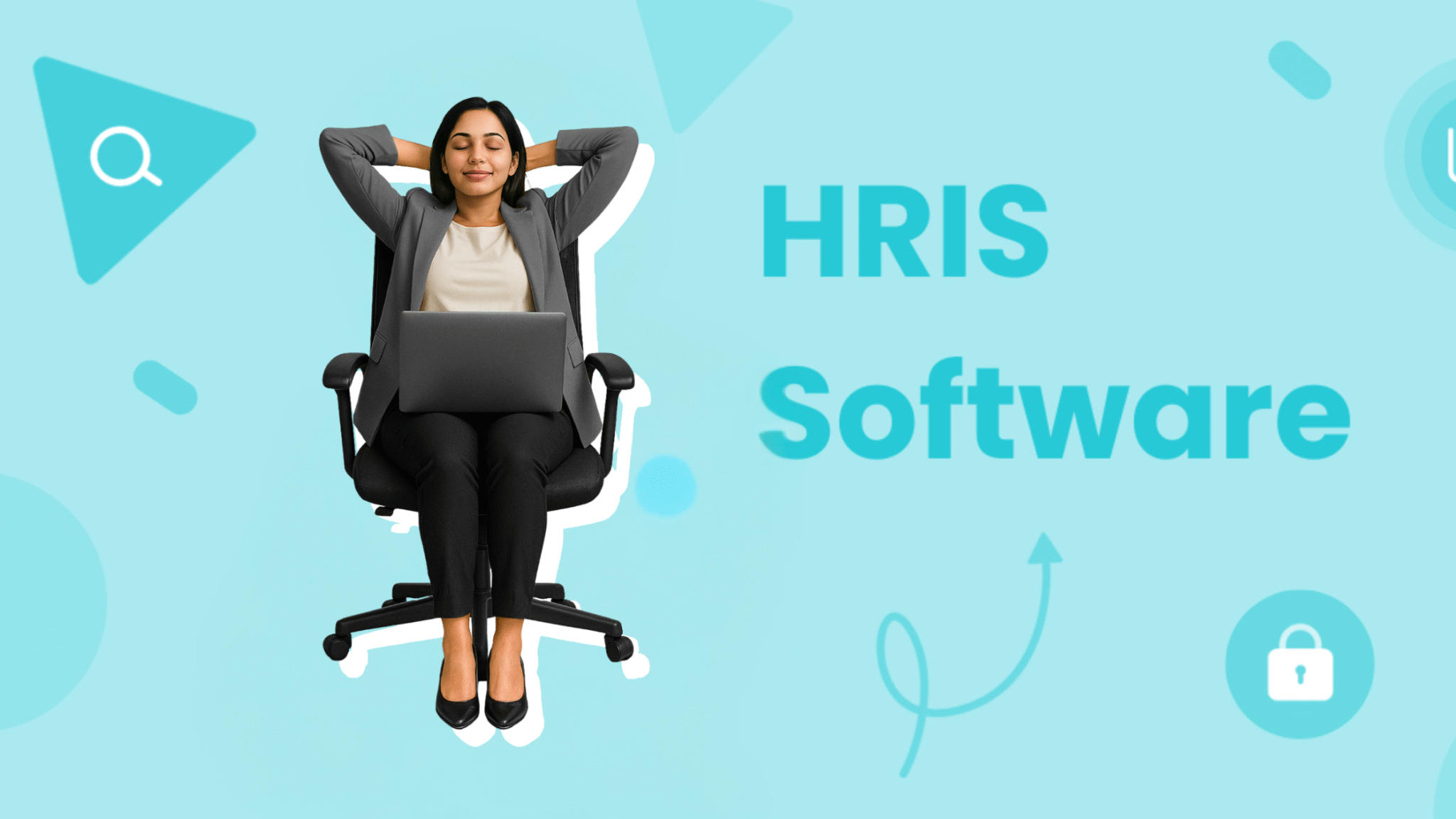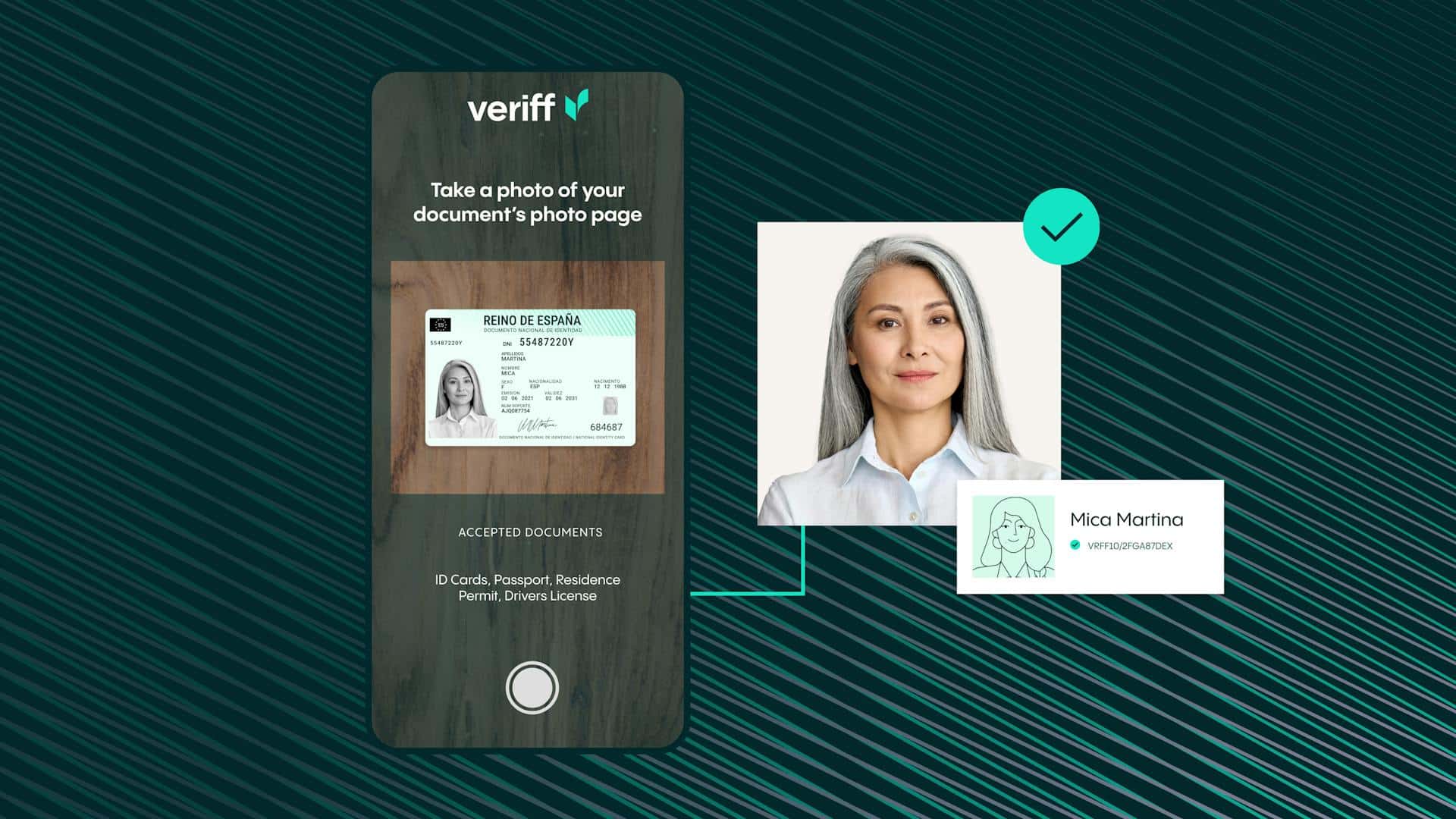Struggling with low employee engagement or high turnover? The answer may lie in understanding what your employees really think. Employee sentiment analysis provides actionable insights, allowing you to proactively address concerns, boost morale, and create a workplace where people thrive. It’s time to move beyond guesswork and harness the power of data-driven HR decisions.
Using mood analysis tools in HR can make all the difference. It can tell you a lot about how engaged and happy your employees are with their jobs. Here is a step-by-step guide on how to use these tools correctly.

Step 1: Figure out what you need
Figure out what you want to do with employee sentiment analysis. Some of the most common goals are to get employees more involved, spot possible problems early, and improve communication.
Step 2: Define Your Goals and Objectives:
- What specific things do you want to look into? (like employee involvement, the experience of new employees, and comments on new rules)
- How will you know if you’ve been successful? (lower employee loss, higher employee happiness scores, etc.)
Step 3: Choose the Right Tool
Several tools, like MonkeyLearn, Lexalytics, and IBM Watson, can be used to analyze mood. Compare prices, features, and how easy they are to integrate. Make sure the tool you pick can handle the amount of data you have and works well with the HR systems you already have in place.
Tools for Employee sentiment analysis
Platforms for surveys: A lot of survey tools, like Culture Amp and Qualtrics, have built-in mood analysis tools that can be used to look at open-ended answers.
Social listening tools, like Brandwatch and Talkwalker, listen to what people are saying about your business on social media and internal lines of communication and figure out how people feel about it.
Platforms for natural language processing (NLP): These platforms, like IBM Watson and Google Cloud Natural Language, offer more advanced mood analysis tools that can often be customized and linked to other HR systems.
Platforms just for HR analytics: Some platforms, like Tipsoi, are designed to do HR analytics and have mood analysis tools that are specific to employee data.
It is very important to choose the right tools for mood research. Here are some choices to think about:
1. Employee Sentiment Surveys:
With traditional surveys, you can get direct feedback from your workers. Protect people’s privacy to get honest answers. You can use SurveyMonkey and Qualtrics or have a system built just for you.
2. Interviews:
Have talks with staff one-on-one. Interviews give more information, but they are less private. Ask open-ended questions to get to the bottom of how people feel. Help people talk about certain topics.
3. Focus groups:
Gather small groups of employees from different teams. Facilitate discussions on specific topics. Focus groups provide qualitative insights. It gives you meaningful information.
4. Social media and online listening:
Keep an eye on social media sites for posts about your business. To keep track of how people feel, you can use Brandwatch, Hootsuite, or Mention.
5. Platforms for social collaboration:
Use internal communication tools, like Slack or Microsoft Teams, to find out how your employees feel. Watch the conversations, responses, and participation.
Step 4: Identify Data Sources:
- Employee surveys: Regular pulse polls, onboarding/exit surveys, or performance reviews are all good ways to get feedback.
- Internal communication channels: Look for trends in how people feel by reading emails, Slack messages, or website posts.
- Social media: Keep an eye on what people are saying about your business on sites like Glassdoor, Twitter, and LinkedIn.
Step 5: Data Collection
Get information from a lot of different places, like staff polls, letters, job reviews, social media, and tools for internal communication. To protect staff information, make sure you have a thorough data protection policy in place.
Step 6: Preprocess the Data
Remove noise and useless data from the data before processing it. This could mean blocking messages from people who aren’t employees and making private data anonymous.
Step 7: Implement Ethical Practices
Keep in mind that mood analysis deals with feelings and personal information. Make sure you follow ethical practices, such as getting workers’ full permission and keeping their data and information safe. Be clear about what you want to achieve with employee sentiment analysis. Assure that all data gathering and research follows the rules for data protection, like GDPR. Make sure workers know how their data is being used and get their permission before doing so.
Step 8: Integrate Sentiment Analysis Tool
Add the mood analysis tool to the systems you use to handle your HR. Set up the tool to look at the data that was collected. Setting limits for mood recognition and groups for analysis (like “positive,” “negative,” and “neutral”) could be part of this. The integration should be smooth to allow for seamless employee sentiment analysis.
Step 9: Training the Model
If the tool you’ve chosen lets you change things, use your own information to train the model. This means giving examples of neutral, positive, and bad emotions. Adding new data to the model on a regular basis will make it more accurate. This step is crucial for effective employee sentiment analysis.
Step 10: Monitor and Analyze
Real-Time Monitoring:
- You can use the mood analysis tool to look for patterns, trends, and outliers in the data.
- Look for links between how people feel and other HR measures, like absence and exit rates.
- Sort data by job, region, or category to find information that is useful for certain groups.
- You can use the tool to see how your employees are feeling right now. To keep an eye on opinion changes, set up screens and regular reports. Employee sentiment analysis should be an ongoing process.
- Look at the data to find trends and trouble spots. For instance, a quick drop in positive mood could mean that a problem is starting to show up.
- Look at themes and trends.
- Find problems or ways to make things better.
- Create action plans based on what you’ve learned.
Step 11: Take Action
- Come up with ways to deal with problems that you find through mood analysis. This could include focused information, changes to policies, or events that are designed to get employees involved.
- Use the lessons to help leaders make choices based on facts.
- Based on the analysis, come up with tailored measures to deal with any negative feelings or take advantage of any positive trends. Employee sentiment analysis can help you pinpoint areas that need immediate attention.
- Share the results with the company’s leaders and important people, emphasizing how feelings affect business results.
- Always keep an eye on how people feel and change your technique as needed.
Step 12: Feedback Loop
Sentiment research isn’t something you do just once:
- Regularly, find out how your employees feel.
- Secondly, keep changing your tactics as things change.
- Then, check in on how well your mood analysis application is working on a regular basis. Next, ask workers what they think about any changes that were made based on the results of the mood study.
- Finally, make changes and improvements to your method as needed to make sure you keep getting better. Since the goal of employee sentiment analysis is continuous improvement.
Real-World Examples of Employee Sentiment Analysis
- Google: Google uses mood analysis to keep an eye on the comments its employees give through its internal messaging systems and yearly polls. Evidently, this helps them quickly find and fix any problems or complaints among workers. Furthermore, they utilize employee sentiment analysis to ensure a positive work environment.
- IBM: IBM’s Watson AI works with their mood analysis tools to look at employee involvement polls and social media posts to give you real-time information about how your employees feel.
- Hilton: Hilton uses mood analysis to look at comments from employees through questionnaires, social media, and other channels in order to improve the general experience of employees.
Tips for Success:
- Start out small: Before going big, start with a pilot project to see how well mood analysis works in a small area.
- Be honest when you talk. In fact, tell your workers the truth about how you’re using their information and why mood analysis is useful. Because transparency is key in employee sentiment analysis.
- Get people involved. Get help from the top and other areas to make sure that the idea is widely accepted and used.
In short, you can use sentiment analysis to make your workplace more involved, productive, and upbeat if you follow these steps and use the right tools. Overall, employee sentiment analysis is a powerful tool for any HR department.
FAQs
Employee Sentiment
Sentiment analysis is a technique that uses natural language processing (NLP) to determine the emotional tone behind text data, like whether it’s positive, negative, or neutral.
Why should HR departments use sentiment analysis?
Sentiment analysis provides valuable insights into employee engagement, satisfaction, and potential issues. Additionally, it enables HR to make data-driven decisions and improve the employee experience.
What are some common applications of sentiment analysis in HR?
It can be used to analyze employee feedback in surveys, monitor internal communication channels for sentiment trends, and track social media mentions of the company.
How do I choose the right sentiment analysis tool for my HR department?
Consider factors like your budget, data sources, desired features (e.g., customization, integration with other HR systems), and the level of technical expertise required.
Is sentiment analysis accurate?
While sentiment analysis has improved significantly, it’s not foolproof. It’s essential to combine sentiment analysis results with other data and human judgment to gain a complete understanding of employee sentiment.
What are some challenges associated with sentiment analysis in HR?
Challenges include ensuring data quality, protecting employee privacy, dealing with sarcasm or irony in text, and interpreting sentiment in different cultural contexts.
How can I ensure the ethical use of sentiment analysis in HR?
Be transparent with employees about how their data is being used, anonymize data whenever possible. Additionally, focus on using insights to improve the employee experience, not punish or monitor individuals.
Can sentiment analysis help predict employee turnover?
While sentiment analysis alone may not be a perfect predictor, it can provide valuable early warning signs of potential turnover by identifying trends in negative sentiment or dissatisfaction.
How can I get started with sentiment analysis in HR?
Start small with a pilot project focused on a specific area, like onboarding feedback or employee surveys. So, choose a user-friendly tool and gradually expand your use of sentiment analysis as your team gains experience and confidence.








